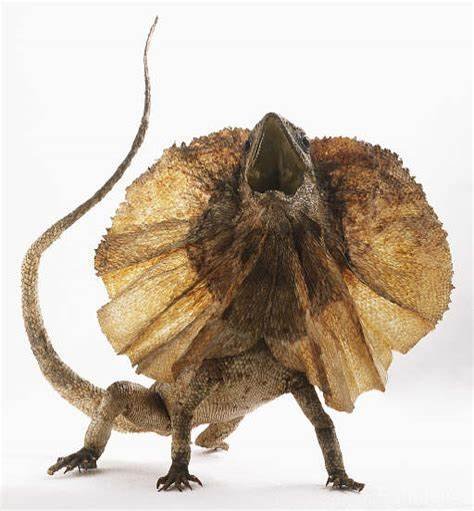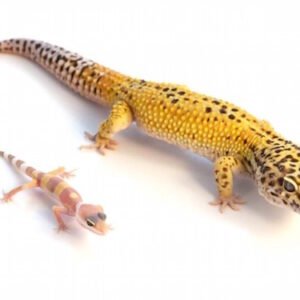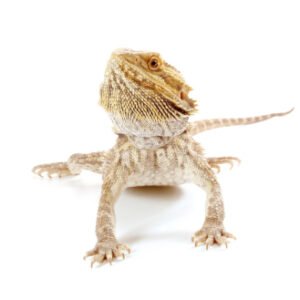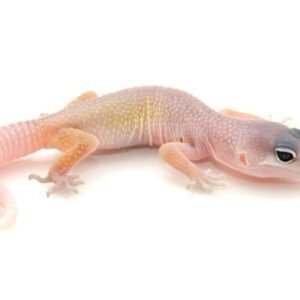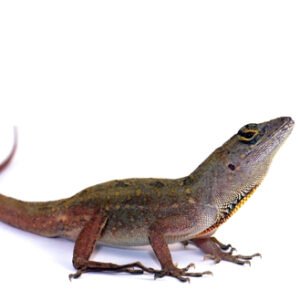Exploring the Fascinating World of Chlamydosaurus: The Frilled Lizard
Introduction to Chlamydosaurus
The Chlamydosaurus genus, most commonly recognized as the frilled lizard, presents a remarkable example of adaptation within the reptile family. This distinctive lizard is primarily classified within the family Agamidae and is native to the forests and open woodlands of northern Australia and New Guinea. The Chlamydosaurus kingii species, which is the most studied and well-known member of this genus, catches the attention of biologists and reptile enthusiasts alike due to its fascinating characteristics and behaviors.
One of the most notable features of the frilled lizard is its expansive frill, a unique structural adaptation that serves multiple purposes. This frill, formed by elongated skin folds around the neck area, can be extended as a form of display during mating rituals or as a defensive response against potential threats. When fully extended, the frill can create a visually striking appearance, making the lizard appear larger and more intimidating to predators. Additionally, this extension helps in thermoregulation, allowing the lizard to manage its body temperature effectively by absorbing sunlight or releasing heat.
The habitat of the Chlamydosaurus is characterized by a preference for humid environments, often found basking in trees or shrubs, where it can easily camouflage itself amongst foliage. Its geographical distribution adds to its intrigue; the frilled lizard is predominantly found in specific regions, yet its adaptability allows it to thrive in varying ecological zones. In the realm of herpetology, the Chlamydosaurus serves as an interesting subject of study, shedding light on the complexities of reptilian behavior, adaptation, and survival strategies within its natural habitat.
Physical Characteristics and Behavior
The Chlamydosaurus, commonly known as the frilled lizard, exhibits a range of distinctive physical characteristics that contribute to its survival in the wild. This fascinating reptile typically reaches lengths of approximately 3.5 feet (1 meter), with a body structure that is both robust and agile. One of the most notable features is its striking frill, a fold of skin that extends around the neck and can be displayed prominently when the lizard feels threatened or during mating rituals. The coloration of the frilled lizard varies, generally consisting of browns, grays, and reddish hues, which serve as effective camouflage in its natural habitat of forests and woodlands in northern Australia and New Guinea.
The frilled lizard’s coloration and frill serve multiple roles in natural selection. The frill is not only used as a means of intimidation to ward off potential predators but also plays a critical role in courtship displays. During mating season, males often exhibit a heightened display of their frill to attract females, showcasing their vigor and genetic fitness. This visual display is an integral part of their reproductive strategy, helping to ensure the continuation of their species.
In terms of behavior, the Chlamydosaurus is primarily arboreal, adept at climbing trees where it typically resides. Its diet predominantly consists of insects and small invertebrates, which it hunts with agile movements. The lizard often relies on its excellent camouflage to ambush prey rather than chase them down. Social interactions among frilled lizards are generally limited outside of the breeding season, and males can be quite territorial, showcasing aggressive posturing to establish dominance. These behavioral adaptations, combined with the lizard’s unique physical traits, allow the frilled lizard to effectively thrive in its environment, highlighting the delicate balance of physical and behavioral traits in the survival of species.
Conservation Status and Threats
The conservation status of the Chlamydosaurus, commonly known as the frilled lizard, highlights the critical need for awareness and action regarding the species’ future. The International Union for Conservation of Nature (IUCN) currently lists the frilled lizard as having a status of ‘Least Concern’, indicating that it does not face immediate risk of extinction. However, this designation can be misleading, as local populations may be experiencing significant declines due to various threats.
One of the primary threats to the frilled lizard is habitat loss. As human populations expand and urban development takes place, essential habitats such as woodland and forest areas are increasingly fragmented or destroyed. These changes disrupt the lizard’s natural environment, making it difficult for them to find food, mates, and shelter. Furthermore, agriculture and land conversion for livestock use also contribute to the degradation of their habitat, posing additional risks to their survival.
Climate change serves as another critical threat, influencing the frilled lizard’s behavior and survival. Alterations in weather patterns lead to habitat changes, which can impact the availability of resources needed for their sustenance. In particular, increased temperatures and shifting rainfall patterns can affect their breeding cycles and food availability, leading to reduced reproduction rates.
Conservation efforts aimed at protecting the frilled lizard involve various strategies and initiatives. Organizations dedicated to wildlife conservation are implementing measures to protect the frilled lizard’s habitats, advocate for stronger environmental regulations, and conduct research to monitor population trends. Local communities are also playing a vital role in conservation actions, often engaging in habitat restoration projects and promoting awareness of the ecological importance of the frilled lizard. These collaborative efforts are crucial to ensuring the frilled lizard can thrive in their natural environment.
Chlamydosaurus in Popular Culture and Research
The Chlamydosaurus, commonly known as the frilled lizard, has made a significant imprint on popular culture through various forms of media. Films and documentaries often portray this unique reptile due to its remarkable frill, which expands dramatically as a display of intimidation or communication. This striking feature has captured the imagination of audiences, leading to the frilled lizard being featured in nature documentaries such as “Planet Earth” and “The Life Collection.” Additionally, its vibrant appearance has made it a subject of artistic representations in books and illustrations, further solidifying its place within popular culture.
Beyond its portrayal in media, the Chlamydosaurus serves as a crucial subject within scientific research, offering insights into reptilian biology and ecology. Numerous studies have investigated its behavior, focusing on its mating practices and social interactions. For instance, research has highlighted how male frilled lizards exhibit specific behaviors during the breeding season, using their frills effectively to attract mates and establish dominance. Such studies not only enhance our understanding of the Chlamydosaurus but also provide valuable data on the evolutionary adaptations of reptiles in general.
Furthermore, the ecological significance of the frilled lizard cannot be overlooked. It plays an integral role in its habitat as a predator and prey, contributing to the biodiversity of its ecosystem. Through ecological studies, scientists have gathered important information regarding its dietary preferences and its interactions with other species. This research contributes to a broader understanding of ecosystem dynamics, demonstrating how species like the Chlamydosaurus can impact their environment. Such findings underline the importance of conserving their natural habitats, which are vital not only for the frilled lizard’s survival but also for the health of the ecosystems they inhabit.

